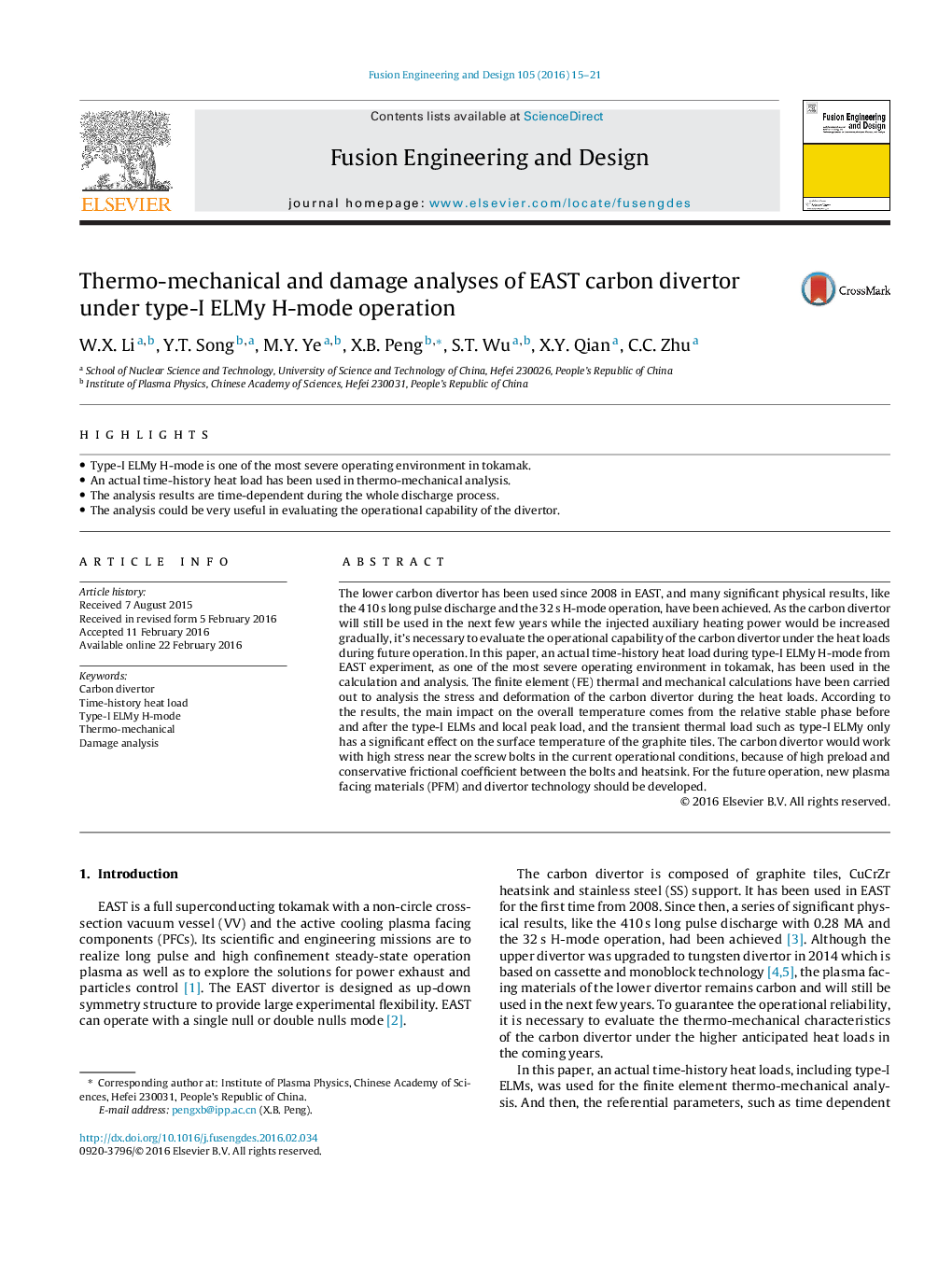| کد مقاله | کد نشریه | سال انتشار | مقاله انگلیسی | نسخه تمام متن |
|---|---|---|---|---|
| 270904 | 504974 | 2016 | 7 صفحه PDF | دانلود رایگان |
• Type-I ELMy H-mode is one of the most severe operating environment in tokamak.
• An actual time-history heat load has been used in thermo-mechanical analysis.
• The analysis results are time-dependent during the whole discharge process.
• The analysis could be very useful in evaluating the operational capability of the divertor.
The lower carbon divertor has been used since 2008 in EAST, and many significant physical results, like the 410 s long pulse discharge and the 32 s H-mode operation, have been achieved. As the carbon divertor will still be used in the next few years while the injected auxiliary heating power would be increased gradually, it’s necessary to evaluate the operational capability of the carbon divertor under the heat loads during future operation. In this paper, an actual time-history heat load during type-I ELMy H-mode from EAST experiment, as one of the most severe operating environment in tokamak, has been used in the calculation and analysis. The finite element (FE) thermal and mechanical calculations have been carried out to analysis the stress and deformation of the carbon divertor during the heat loads. According to the results, the main impact on the overall temperature comes from the relative stable phase before and after the type-I ELMs and local peak load, and the transient thermal load such as type-I ELMy only has a significant effect on the surface temperature of the graphite tiles. The carbon divertor would work with high stress near the screw bolts in the current operational conditions, because of high preload and conservative frictional coefficient between the bolts and heatsink. For the future operation, new plasma facing materials (PFM) and divertor technology should be developed.
Journal: Fusion Engineering and Design - Volume 105, April 2016, Pages 15–21
